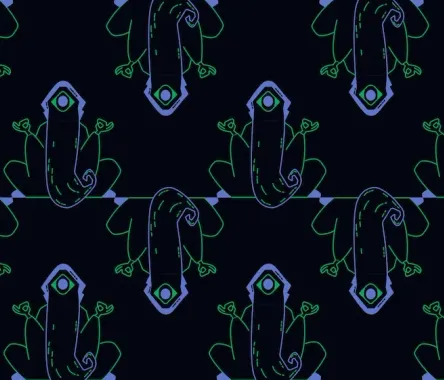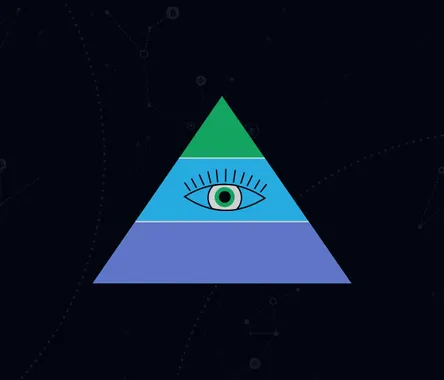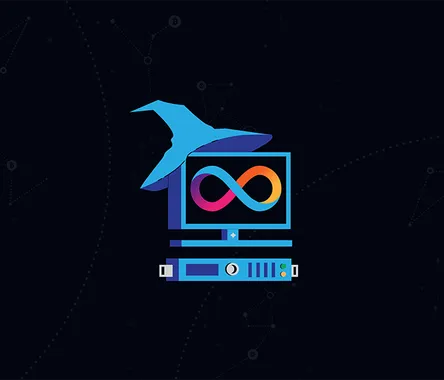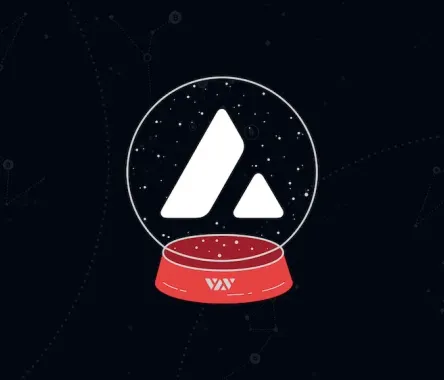What is Terra?
The global growth of the cryptocurrency market pushed the demand for stable digital assets that may serve as a safe haven for users' funds during periods of high market volatility. From another point of view, major cryptocurrencies at their current level of adoption are not quite suited to serve as a payment method. Exactly who will want to use their Bitcoin or Ether to pay for goods or commodities if the price of each coin may double the next day or grow tenfold in a month? Terra Protocol aimed to solve these issues by building a family of stablecoins pegged to local currencies, providing an effective end-to-end payments solution.
Unlike Tether or Circle, Terra’s stablecoins were not backed by cash. The protocol used an algorithmic model where the total supply of assets was powered by an elastic supply of its utility and governance native token, LUNA. To put it simply - each time a stablecoin was minted, a corresponding amount of LUNA tokens was burned. Terra offered not just one stablecoin, but many fiat-pegged digital assets effectively linked to the prices of many local currencies. At the very beginning there were only a few, while at its peak, the list included 15 different stablecoins powered by the network. Besides the usual crypto practices such as staking and yield farming, Terra’s assets could be used in a variety of ways in the real world: from buying a cup of morning coffee to paying monthly bills.
Initially founded in 2018 by South Korean-based Terraform Labs, Terra launched its mainnet in April 2019. From the beginning, Terra mainly targeted e-commerce markets, preparing them for the mass adoption of cryptocurrency payments. Thanks to a bunch of successful partnerships with different digital payments providers, Terra had quickly grown its audience, specifically in the Asia-Pacific region. Perhaps, the most impactful was the partnership with Chai, a South Korean-based mobile payments app, based on the Terra blockchain, that was launched in July 2019 and is now responsible for 5% of all payments made in the country. Of no less importance was 2019’s partnership with the Mongolian government that allowed it to accept TerraMNT, a stablecoin pegged to local currency, as payment for utilities.
Terra lost all its value straight from its highest evaluation in spring 2022, due to what many consider a chain of wrong decisions taken by its infamous founder Do Kwon, following an underlying flaw in its algorithmic stablecoin mechanics.
How did Terra work?
Terra was built using Cosmos SDK and operated as a proof-of-stake blockchain using the Tendermint consensus. The network issued mining rewards from transaction fees to validators for staking LUNA. The network supported atomic swaps between any Terra stablecoins which enabled a seamless cross-border exchange. Each time UST or other fiat-pegged tokens were being spent, the fees generated were distributed among validators who had staked LUNA.
New blocks on Terra were submitted by validators called proposers. After a new block of transactions had been submitted, validators of the active set voted in two rounds and decided whether to accept or reject the proposed block. In case they vote to accepted it, the block would become part of the chain, and in case they rejected it, a new proposer was selected and the process is repeated. The transaction fees from the block were allocated as rewards for validators and delegators, and a little extra was paid to proposers.
It was claimed to be infeasible for a fraudulent block to be accepted on Terra, as each validator had a copy of all transactions on the network and compared them against the proposed block before deciding on their vote.
The goal of the network was to keep the price of the fiat-pegged assets stable. On its core level, Terra Protocol operated like a money market providing shared liquidity to all issued stablecoins. The prices were leveraged through adecentralized system of oracles and arbitrage opportunities.
Terra stablecoins usually kept the names of currencies, adding the word Terra to them, for example, Terra USD (UST) or TerraKRW (KRT). Terra stablecoins' price stability was maintained through the operation of the market module, which created arbitrage opportunities and thus motivated users to apply mint and burn functions. These functions could be performed via the native TerraStation wallet by activating so-called market swaps in it. The essence of the market module is that it would always allow exchanging of the equivalent of 1 USD of LUNA token for exactly one Terra USD (UST), even if on the open market the price of stablecoins has deviated from its peg. These mechanics were exploited by holders of large amounts of crypto in the spring of 2022 leading to the imminent end of the project as its native LUNA token dropped to far less than $0.01 in just a few days.
Since Terra Stablecoins were dependent on the network's native token LUNA, the network needed to have an accurate price feed for LUNA. To do this, Terra used an Oracle module, which gives the network current LUNA prices against various Terra pegs. The Terra network's validators periodically voted on the LUNA price, and the protocol collected the voting results, outputs the median price, and updated the token price on-chain once per voting period, which lasted five blocks. Every once in while during a voting period, the protocol required all validators of the active set to vote for the LUNA price against all Terra denominations listed on the White List. Validators had to also pre-commit to the LUNA price they will vote for in the next voting period. This was done to prevent unfair behavior by validators and tinkering with the votes of others in the network, and it was also said to reduce centralization. Thus, during each voting period each validator transmited two messages - with the LUNA price for this period and the next. Their votes were checked against the previous vote period pre-votes, and a check was made to make sure that the result is not divergent from the previous vote period pre-vote.
If any Terra denomination in the current vote period received fewer votes than the vote threshold, its rate was deleted and no exchanges could be made with that coin until the beginning of the next interval.
At the end of the voting interval, the votes were collected and the median calculated, and those validators whose vote scores were not too far off the median were rewarded with coins from the oracle reward pool. If, however, a validator had not voted for one or more Terra denominations, or if their vote was very different from the weighted median, they were subject to the punitive slashing procedure.
How to use Terra?
To use Terra’s stablecoins or the network's apps, a wallet supporting the blockchain had to be be connected. Besides Terra Station, Terra wallet support included Ledger, Mirror Wallet, Oxis, XenGo, XDEFI, and Math wallet.
As is the case with most other networks, on Terra fees were applied to each transaction, which are called, like on Ethereum, Gas. Fees on transactions involving stablecoins were slightly higher than without them since they included a Tobin tax or Spread fee. The commissions received from the Tobin tax, were introduced to ensure the fairness of the Oracle module, and had a fixed rate for each Terra denomination (varying from 0.35% to 2%) and were sent to the oracle reward pool. You could see the amount of commission by sending a query to the oracle.
Spread fees also came into play during market swaps between LUNA and Terra. These fees started at 0.5% and could go up to maintain Constant Product and ensure liquidity for Terra - LUNA swaps.
Terra was a decentralized network and was formally managed by community governance. To create your own proposal or vote for an existing proposal, you had to use the native Terra Station wallet of the platform and go to the Voting section. Also, to avoid abuse of the system, there was a minimum deposit of 50 LUNA, which had to be made on each proposal. Then for one week, the community members voted for the proposals with their staked LUNA, where 1 LUNA equaled one vote. If the number of votes exceeded 40% of all staked LUNA and the proposal received more than 50% of the support votes, with no more than 33.4% of rejected votes, the proposal was accepted and the deposit paid for it was returned to the user. The user's deposit was burned if the minimum amount of 50 LUNA had not been paid within two weeks of the proposal being posted, if a quorum of 40% of all staked LUNA had not been met, or if the percentage of votes against the proposal exceeded 33.4%.
Terra staking
The active validator set on Terra was made up of 130 validators who held the largest amount of the platform’s native token LUNA. To get into the active set, validators needed to stake more than the bottom validator of the set.
Validators processed transactions and kept the network secure. LUNA holders could delegate their tokens to these validators to earn a portion of the fees. The size of rewards could vary from one validator to another, so it was advisable to choose wisely. It was also possible to split holdings between different validators, as well as to change a validator after the tokens were delegated.
However, there was a 21-days unstaking period on Terra which meant a validator had to wait three weeks before they could withdraw assets. This might seem uncomfortable but was meant to serve as an additional safeguard to control whales’ behavior, especially in case of a black swan event, like the May 2021 Bitcoin crash that was followed by the whole crypto market plunge. More information on LUNA staking and rewards was available in the project documentation. Recommendations for those who want to run a full node were also available in the documentation articles.
The LUNA token
LUNA token was the main driver powering the Terra ecosystem. It helped to keep the prices of fiat-pegged assets stable, incentivized validators, used to vote on governance proposals, while also serving as a medium of value.
Terra had its family of stablecoins grown to 17, issuing cryptos pegged to the US Dollar, Canadian, Australian, Singapore, and Hong Kong Dollars, Euro, Thailand Bat, Indian Rupee, Chinese Yuan, Korean Won, Japanese Yen, GB Pound, Danish, and Swedish Krone, Mongolian Tughrik, and IMF Special Drawing Rights, SDR. The latter represented a basket of currencies to supply International Monetary Fund member countries during financial crises.
The issuing of new LUNA tokens generated seigniorage which was stored in the Terra Treasury. The protocol distributed accumulated funds among validators and ecosystem dApps that had applied for funding. The total supply of LUNA was initially set to under 1 billion tokens, but as the adoption of Terra-powered stablecoins rose, this cap could have be extended to any degree.
Of course, LUNA was a highly volatile asset since it absorbed the volatility of the whole Terra ecosystem. Which is what led to its demise, since whales were constantly exchanging stablecoins for LUNA and then selling it for profit, making an endless downward spiral that eventually made the whole network cease to exist. Moreover, since the project had established a Luna Foundation Guard to safeguard the peg, which kept bragging with the amounts of bitcoin it was accumulating, when the attack on Terra started and the algorithms in place to prevent such scenarios showed their inefficiency, the Foundation dumped huge amounts of bitcoin on the market and dumped its and the whole market’s price. As that happened during a very volatile bear market and a lot of large investors such as Three Arrows Capital lost a huge amount of money in the attack, panic grew and crypto went even deeper in its 2022 market decay.
What exactly happened to Terra?
The team behind Terraform Labs is well known. The project was started in 2018 by Do Kwon and Daniel Shin. Do Kwon previously worked at Microsoft, while Shin is known in Korea as the founder of one of the largest e-commerce platforms, TMON, and now works as the CEO of CHAI, a partnering online payments platform on Terra.
In the middle of December 2021, almost three months after the Columbus-5 update was introduced, a bug allowing bots to make millions on incorrect asset price differences was discovered by the network's arbitrators. Due to the lowered oracle price of Terra's native asset, LUNA, arbitrageurs took advantage of an upgrade introduced with Columbus-5 to keep the TerraUSD Stablecoin (UST) price stable. Compensating for its price by buying or burning undervalued LUNA, arbitrageurs created a large gap in the LUNA to UST price ratio, taking advantage of the LUNA price on the TerraSwap DEX and on-chain mismatch. Such manipulation brought them hundreds of thousands of dollars per transaction. LUNA's unusual behavior, caused by these spikes and reflected in the chart by long wicks, was noticed by users and reported to Terraform Labs co-founder Do Kwon. "You guys are getting worked up over a relatively small arb," Do Kwon responded on Telegram and explained his position by saying that a two-million-dollar arbitrage would not hit the twenty-billion-dollar Terra network. The project's co-founder also joked about panicked users on Twitter, writing, "Its called an arb - arbs make markets more efficient. You should do it too!" However, Do Kwon then took heed and acknowledged the problem. Anchor Protocol also signaled the problem with bLUNA being priced way below the market price.
In May 2022, while being the largest stablecoin on the market, UST lost its peg to the US dollar and never managed to recover. Terra’s unique mechanics allowing users to exchange one UST for one dollar worth of LUNA tokens to help restore the peg, didn’t manage to fulfill its task, and in just a couple of days billions worth of digital assets were erased in the collapse of the LUNA token from nearly $100 to less than $0.0001.
On May 7, 2022, the UST token’s value went to $0.98 and kept that level longer than the arbitrage theory around which the algorithmic stablecoin’s mechanics were based, this led to large amounts of the digital asset being removed from various protocols. Although this may be attributed to FUD growing on crypto Twitter, some attributed the Terra bank run to a coordinated attack.
The Luna Foundation Guard, established months prior, had been accumulating bitcoin since its creation to put it on the market and restore the peg of the stablecoin if needed. In a highly promoted campaign on social media, and through various news outlets, the LFG was boosting it had managed to amass the impressive $1.2 billion worth of BTC and other digital assets.
The funds gathered by the Foundation started being converted to UST by it, and BTC was transferred to Jump capital to enter trades with the Foundation in large size and on short notice. Three days later, these efforts didn't bring any fruits and although there was a small restoration in the peg of the stablecoin for a brief moment, it likely triggered the remaining UST holders to trade their tokens, once again depegging the digital asset.
In a “last-ditch effort” the Foundation sold 33,206 BTC for an aggregate 1,164,019,521 UST, and later swapped 883,525,674 UST for 221,021,746 LUNA which was staked across a range of validators to protect the network from a possible governance attack as the amount of LUNA kept increasing.
Since none of the efforts to restore the UST peg were successful, the LUNA token inflation kept growing, thus reducing the cost of a governance attack, the Terra validators decided to halt the Terra chain temporarily on 13 May, 2022. Around nine hours later, when the blockchain was resumed, validators were asked to disable on-chain swaps and IBC channels. This didn’t stop LUNA’s plummet and the Terra blockchain was officially halted at block 7,607,789 while a plan to reconstitute the network was being created.
Around the end of May 2022, Do Kwon, Terra’s infamous founder, announced the release of Terra 2.0 - a hard fork of Terra that isn’t pegged to UST and is governed by a new LUNA token. The new token is to be airdropped to the original LUNA token holders in various schemes depending on their holdings, the platform used for keeping the assets, and other factors. At the same time, the old version of the blockchain is to remain in its state, but under the name Terra Classic and its LUNA token is to be renamed to LUNC.
Ecosystem & Partners
While the ecosystem of Terra was relatively narrow compared to other trending blockchains, it was sufficient enough regarding existing demand for its products off-chain.
Terra Station was the platform’s native wallet that supported all Terra-based assets and was tailored to suit the various needs of users. It had a desktop and mobile version as well as a Chrome extension that allowed users to interact with the Terra Protocol in various ways. Among third-side wallets with the support of Terra-based assets were multi-platform MathWallet, hardware wallet Ledger Nano X/S, non-custodial Oxis wallet with the support of fiat to crypto on and offramps, and multi-asset ZenGo wallet.
Anchor Protocol was a low-volatility lending and savings platform native to Terra. It allowed users to deposit stablecoins to earn high yield rewards while others could borrow assets at acceptable rates.
Another Terra-based solution that became highly important for the platform’s growth was Mirror Protocol. This dApp allowed users to create synthetic assets such as stocks using Terra-supported tokens as collateral. The assets created were called Mirror Assets (mAssets) and reflected the price of their real-world counterparts.
Terra’s native Pylon Protocol provided a suite of DeFi services aimed at service providers and their customers allowing payments for goods and services from users’ deposits. The protocol was operated by customizable deposit contracts and yield redirection. The suite also included Pylon Gateway, a launchpad for new assets based on Terra.
For users interested in yield farming, the protocol was hosting Terraswap automated market maker and decentralized exchange, developed by Delight Labs. This dApp served as the underlying exchange for Mirror and Pylon protocols.
Despite being built on Cosmos, Terra was meant to be chain-agnostic. Terra Bridge was the place to connect the protocol to other blockchains. Through partnerships with Wormhole and Axelar, connections with Solana, Avalanche, Moonbeam, Polygon, Secret, Harmony, and Osmosis could be established.
Some partnerships helped Terra create opportunities for spending assets in the real world, such as previously mentioned CHAI, a payment system widely used in South Korea, or MemePay, a payment platform highly popular in Mongolia. An API gateway PayWithTerra enabled any merchant or service to join what used to be a growing ecosystem and to accept payments in Terra assets.
What's next?
Following the UST depeg, and unsuccessful relaunch of the Terra network, the Terra ecosystem keeps losing members, and sadly will most likely never bounce up again. DeFi Teller advises its audience to be extremely careful if investing in anything Terra related.
Links
http://terra.money/
https://docs.terra.money/
https://academy.terra.money/





